
The quote “kill your darlings” is a popular expression. Sometimes you have to kill your favorite characters to create a good story. The same saying can be applied to your website. Sometimes it’s the seemingly most user-friendly features that you actually need to remove.
There are features or parts of a website that site owners love, but which can hinder or slow down good search engine optimization. The risk is that the site’s clever features may be something Google doesn’t appreciate or can’t even see. And when Google can’t see or find parts of your site, it becomes harder to achieve high rankings on Google Search. To help you create a great site that both visitors and Google like, it’s time to say goodbye to the following favorite features:
Say goodbye to… infinite scroll
Infinite scroll makes it easy for users to browse your site. When a user reaches the end of the page, the product feed automatically loads more items. Everything keeps rolling, and everyone’s happy… except Googlebot.
When the search engine crawls a page on a site, it doesn’t behave like a user. The search engine uses programs that follow links on a site to find all the pages and content. The search engine’s tool, often called Googlebot, cannot scroll. So if the only way to see the entire product feed is by scrolling down, Googlebot won’t see all your products.
There are also variations with a “Show more” button at the end of the product feed. When you click on it, more products load without moving to a new page (the page URL remains unchanged). However, this version can also be difficult for Googlebot to get past, since buttons are not links but rather a kind of HTML function/JavaScript that Googlebot cannot use. The search engine only sees it as a piece of text and therefore cannot click it. And as we wrote above, Googlebot follows links to find content. It neither scrolls nor clicks buttons.
To check if your “Show more” button is clickable for Google, you can visit a page on your site where you have such a button and look at the cached version of the page. Here’s an example. We typed this into the address bar to see a site’s cache:
cache:https://www.dindomän.com/se/kategori
Then we clicked on “Text-only version” and scrolled down to the button. Here you can clearly see the difference between how the user vs. Googlebot sees the site:
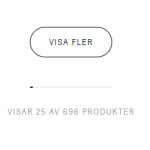
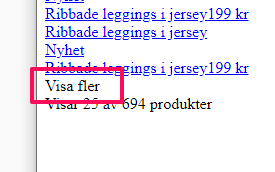
For users it’s a button, but Googlebot will only see it as a plain text string it cannot interact with. Which means it won’t see the rest of the products in the feed. You can also watch this video from a Q&A with Google’s own John Mueller, where he talks more about this.
However, there are infinite scroll alternatives that work. Pagination support must be implemented for Googlebot to be able to process the content. As stated on Google’s developer page:

This may mean you need to talk to your support team or web agency to ensure that your infinite scroll feature has pagination support. If you don’t have access to support and don’t know how to create SEO-friendly infinite scroll, instead go for paginated pages. Google can guarantee reading and indexing those. Like these:
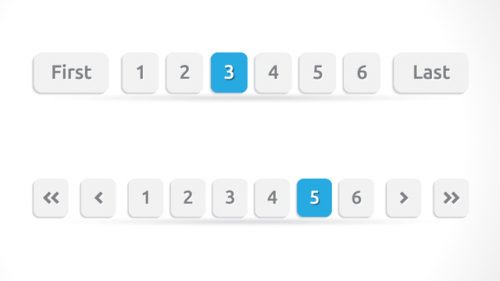
Say goodbye to… the mega menu
The mega menu gives users a good overview of your entire range. Visitors can see all categories and subcategories, then choose exactly the products they want to view. Big sites like Amazon and Adlibris already use it, and it works, right? Well, yes — but it works for them because they are authoritative sites with many inbound links. For smaller sites, it’s harder to rank well when you have an oversized main menu.
The reason is that when someone links to your site, the link equity is spread across all the internal links on that page. So if you have a very large main menu, the link equity will be distributed equally across all the links. This makes the value of each link smaller than if the number of internal links on the page were lower. Let’s say an incoming link to your homepage has a value of 100. That link value will be divided among all the internal links on the page (not just those in the menu, but to keep it simple we’ll focus on the menu).
A page with a large menu:
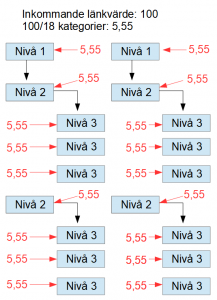
Compared to a page with a smaller menu:
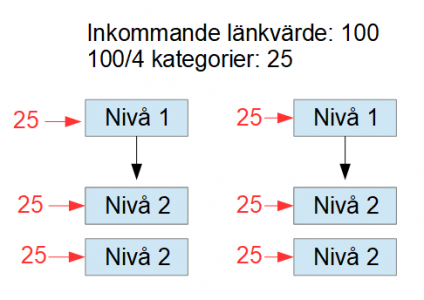
It’s important to emphasize that only Google knows exactly how PageRank works and how much a link is worth. We’ve used the value 100 simply to illustrate how link equity is distributed.
And we don’t mean that you should have as few internal links as possible! It’s about finding a balance between user-friendliness and not diluting the link equity too much. You could say a main menu should contain fewer than 100 links, but even that number can be stretched or reduced depending on the type of site and content you have. Still, it’s a good general rule of thumb to keep in mind.
